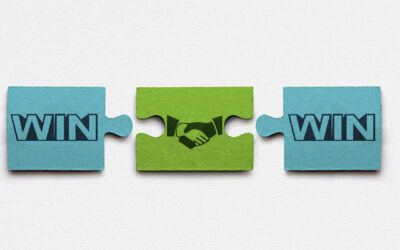The sense of smell is one of the most powerful and evocative of our senses. It has the ability to trigger memories, emotions, and even physical reactions. For centuries, humans have tried to capture and reproduce smells, from perfumes and fragrances to incense and gastronomical experiences. Until recently, the digitalization of smells seemed like a far-fetched idea. However, digitalizing smells is a trend to watch closely in 2023: Google’s AI-powered neural network model could be the next business opportunity and new apparatuses showcase the integration of Scent Technology.
Scent Message
2014 marked the year of the first “transatlantic scent message”. A scent of soupçon of champagne and passion-fruit macarons was dispatched from Paris by perfumer Christophe Laudamiel. David Edwards, the receiver of this message, is a biomedical engineer and has created a multitude of apparatus to make scents “deliverable”. Among these inventions are Le Whiff, a system to deliver inhalable chocolate, WikiPearl, editable packaging for frozen yoghurt and other foods, and the oPhone. The latter showcases Edwards’ aim to develop Vapor Communications, as this large brick-shaped device has two tubes for smelling to acquaint users to intentionally smell. By linking pictures to smells, the user can experience the build-in pallet of 32 scents from “buttery” to “fishy”.
As this was the initial prototype, many investors have tried to enter the market and develop advanced vapour communication. While this did not include big commercial successes, Edwards’ new invention of the Cyrano got more fraction. The Bluetooth-enabled scent releaser has a carrousel of smells and transmits molecules instead of, arguably normalized, waves of light or sound. Each molecule has a different mass and the Cyrano can sufficiently enrich the environment with the scent (the molecules). Edward links this invention to “mood melodies” rather than an authentic representation of reality. In this idea, users can send each other scents such as burnt sugar and vanilla to accompany a picture of crème brûlée, however, this quickly developed into scent jokes, ideas, and memes. To exemplify, the equivalent of the eggplant emoji quickly started to find its way into the “smokey” scent.
Our society has become increasingly advanced, technologically-depended, and digitized which is inherent to introducing the concept of digitalizing smells as a reality. While this can be visible in a myriad of ways, researchers at Google have utilised Artificial intelligence as an initiator in this quickly-developing technology. By training an AI-powered neural network model, molecule structures which correlate to scent could be “mapped out” and used to connect many realms such as food, odor, health, and arguably marketing, and distribution. Sherry (INC.) argues that this can be exemplified in the case of bug repellant. By inserting molecule data into the AI model, the mosquito repellency of nearly any molecule can be calculated and mapped. Utilizing this data, product development heads towards a safer, more sustainable, and more effective manner of reselling.
While the scent is, according to Google researchers, the most difficult sense to quantify into machine-understandable data, years of work have resulted in a so-called “principal odor map” consisting of over 5000 molecules. Each molecule is identified and paired with a multitude of scent descriptors, which are used in the odor map to visualize the relationships between the scents. Grouping alike molecules together (o.a. structure and characteristics), the neural network shows closely related molecules in regards to scent. While this can come in handy in product optimisation in the example of the quantity of DEET, the effective substance in bug repellent, it can also have yet-to-discover uses in the scent, flavour, or perfumery businesses. In an attempt to legitimize the AI-based neural network, the technology competed against trained panellists to categorize 400 different molecules using 55 descriptive labels. In conclusion, the network trumped the panellists and could even identify the strength of particular smells. According to the researchers, this AI-generated odor map can predict the smell of “billions of currently unknown molecules”.
Entertainment and Healthcare
Digitalizing smells involves converting the chemical makeup of a scent into a digital code that can be reproduced and transmitted through electronic devices such as smartphones or computers. This technology has numerous applications and potential uses, ranging from the entertainment industry to healthcare and beyond.
One potential application of digitalizing smells is in the entertainment industry. Imagine being able to experience the smells of a movie scene or a virtual reality game. This would add a new dimension of immersion and realism to these experiences, making them even more engaging and memorable. Several companies are already working on this technology, with companies like FeelReal and Scentee producing devices that can emit scents in response to media content. The former introduced the “world’s first multisensory VR mask” which includes the functions of smell, heat, wind, vibration, and water mist in the VR mask. Being able to stimulate these feelings, the user of the mask enters a virtual sensory advancing the well-known 3d or even 4d movies. In retrospect, Scentee Machina introduces a room diffuser using IOT (Internet of Things) technology, Herein, the application can configure automatized scents according to a specific time frame.
In this regard, scent technology might see a place in the marketing sphere to attract potential customers. While evident examples are the fresh bread at the bakery, studies have shown that diffused aromas can affect consumer behaviour. Sanfilippo in Business News Daily argues that aromas of lavender, basil, cinnamon, and citrus are relaxing whereas peppermint and thyme work invigorating. Moreover, the power of scent can be identified by chocolate and liquorice to have a romantic characteristic while rose promotes happiness and positivity. According to this data, the technology of creating and optimizing scent (distribution) has favourable effects on the company revenue.
To continue, another potential use of digitalizing smells is in healthcare. The smell is a crucial sense for detecting and diagnosing medical conditions such as Alzheimer’s disease and Parkinson’s disease, which can affect a person’s sense of smell. With digitalizing smells, it may be possible to develop diagnostic tools that can detect and monitor changes in a person’s sense of smell, allowing for earlier diagnosis and treatment.
Drawbacks
As with any new technology, there are potential drawbacks and concerns associated with digitalizing smells. One concern is the safety of emitting scents through electronic devices, as some people may have adverse reactions to certain smells. There is also the risk of misuse, as digitalized scents could be used for nefarious purposes, such as manipulating people’s moods or behaviour. Moreover, in the case study of FeelReal’s VR mask, the philosophical question of how far we should integrate Virtual Reality into our real existence is central. Arguably, with this technology developing rather quickly, opponents might argue that our current lives will get completely digitalized.
Furthermore, in the case of the Cyrano or equivalent scent-sharing technology, a hacked device could dispatch unpleasant or even harmful molecules (e.g. chloroform). Edwards also argues that the Cyrano faces not technical but instead biological and cultural barriers: “Scent is secondary, relative to sight and sounds”. A large proportion of people cannot detect certain scents or are unable to link the scent to a name. The diversity of individual scent capacity, which potentially is cultural-based, combined with a widespread “olfactory illiteracy” makes scent messaging a difficult technology to sell in the current society. Luckily, Edwards pleads that Cyrano is a “Trojan Horse” interesting people in scent technologies and attempting to build “sensory vocabulary and awareness”.
Conclusion
In conclusion, the digitalization of smells is a fascinating development in our increasingly technological society. With numerous potential applications in entertainment, healthcare, and beyond, this technology has the potential to revolutionize the way we experience and interact with the world around us. However, it is important to approach this technology with caution and consideration, to ensure that it is used safely and ethically. As with any new technology, the benefits and drawbacks must be carefully weighed before embracing it fully. This technological future could enable scent-sharing from computer to computer or enhance online shopping with scent testing. In conclusion, a particular scent is often perceived differently per person and scent technology is currently establishing new manners to acquaint society with smells and decrease olfactory illiteracy. Scent technology is currently a rapidly developing concept and should, according to prospects by CB insights, see a booming increase in interest in 2023: keep your eyes on these developments.
References
https://www.inc.com/ben-sherry/google-smell-ai-artificial-intelligence.html
https://www.kickstarter.com/profile/feelreal
https://www.businessnewsdaily.com/3469-smells-shoppers-spend-more.html
https://www.newyorker.com/tech/annals-of-technology/is-digital-smell-doomed
Photo by Fulvio Ciccolo on Unsplash



